Car of the Week: The BMW M1 Is a German Supercar With Italian Flair. Now, One Is Up for Grabs.
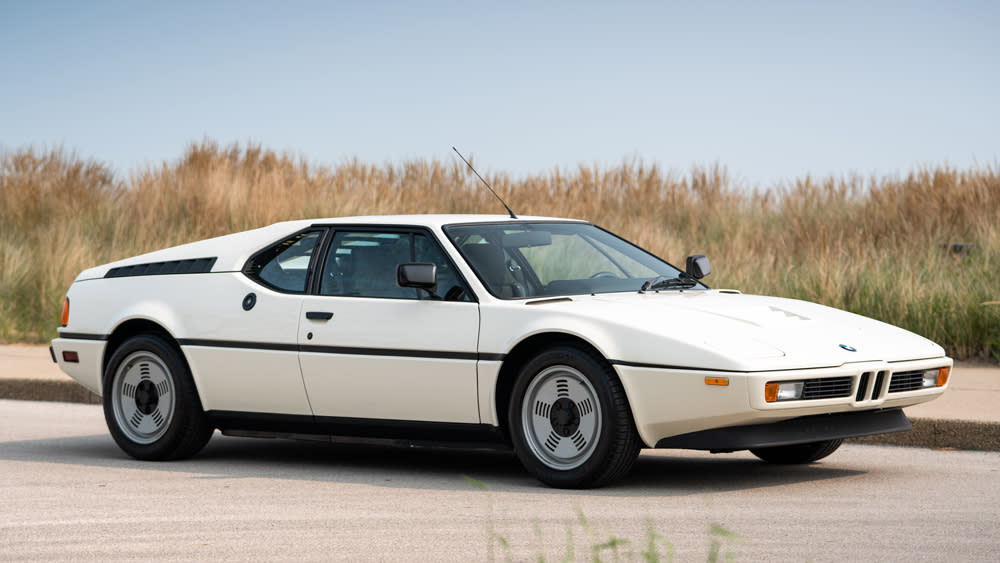
It was a BMW unlike any that had been made before. The first production car to wear the motorsports-focused M division’s badge, the BMW M1 set the stage for generations of M cars to come. It was a bold experiment then, and is a hugely desirable collectible now, 45 years after it burst on the scene. Coming from the automaker known for its cheap and cheerful model designated 2002—a lovable giant killer of sorts, but no world-class sports car—the M1 broke from every BMW tradition. And this example will be one of the featured lots at Gooding & Company’s 2023 Pebble Beach Auctions, which will be held during Northern California’s famed Monterey Car Week in August.
The M1’s history is complicated, and its impact on the Bavarian marque’s reputation was far greater than the modest production run of just 453 examples would suggest. Certainly, the M1 was a supercar in the context of late-1970s racing technology, and that it looks like one is due to its body having been styled by Giorgetto Giugiaro, founder of Italdesign.
More from Robb Report
From a 1966 Ford GT40 to a Ferrari Enzo, All the Must-See Cars at This Year's Hillsborough Concours
20 Long-Lost Ferraris Were Hidden in a Barn for Decades. Now They're Heading to Auction.
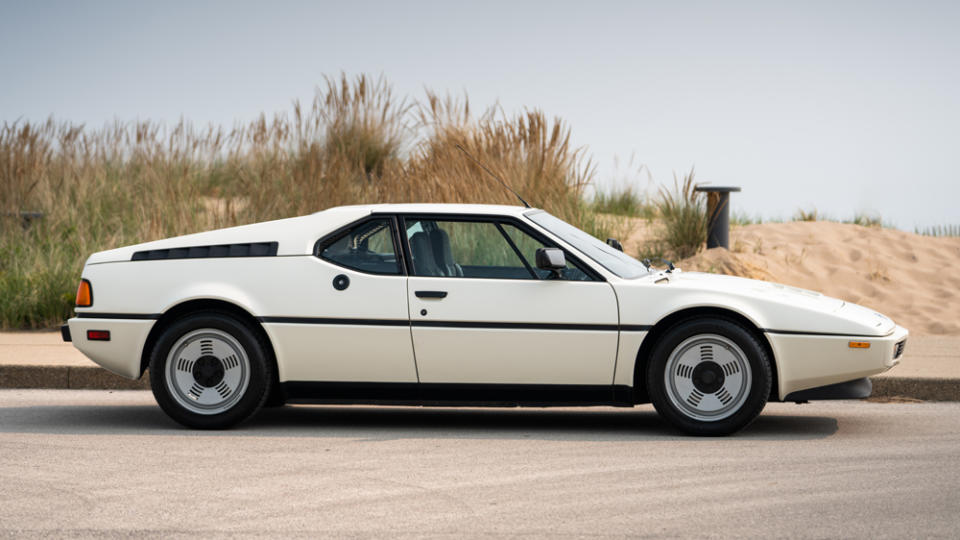
The M1 was developed under the aegis of BMW Motorsport head Jochen Neerpasch to compete in Group 5 racing, primarily against Porsche’s nearly invincible 911. Homologation requirements called for 400 road-going examples, and without the capacity to build the car in house, BMW partnered with Lamborghini to develop the chassis, assemble prototypes, and manufacture the production run.
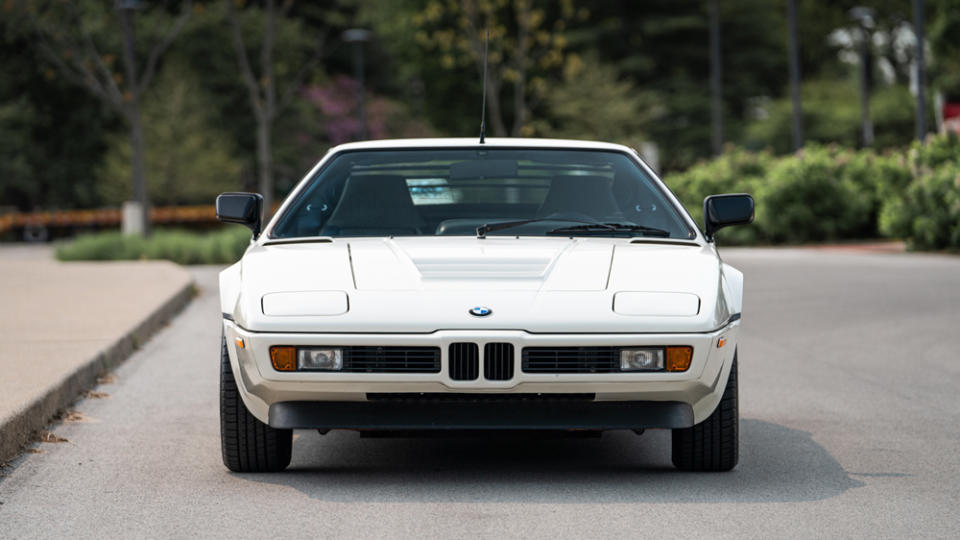
Yet Lamborghini’s financial woes of the era eventually caused BMW to bring the project back in house, though Dallara designed the mid-engined, tube-frame chassis. The project soldiered on, during the course of which subsequent changes in Group 5 rules relegated the M1 to Group 4 competition. If the wedge-shaped profile of the BMW M1 recalls the 1970s-era Giugiaro aesthetic, perhaps best expressed by the Lotus Esprit, it’s because wedges, like leisure suits, were all the rage at the time. But unlike leisure suits, wedges still look cool today. One concession to tradition in the design of the M1 was the retention of BMW’s classic twin-kidney grilles in the front fascia. (Note to BMW’s designers today: bigger isn’t always better.)
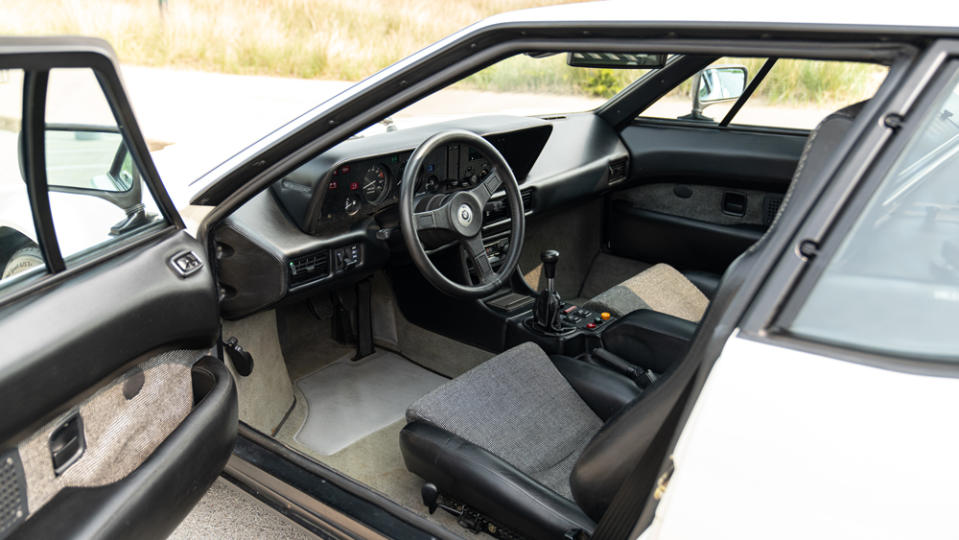
Behind the driver and passenger was BMW’s 3.5-liter, twin-cam inline-six engine with mechanical fuel injection and a five-speed transmission. Making 273 hp in street tune, the mill gave the car the ability to reach about 165 mph. Inside the cockpit, occupants would not be found guilty if either felt a little short-changed of luxury, though the fabric seat inserts seem au courant today.
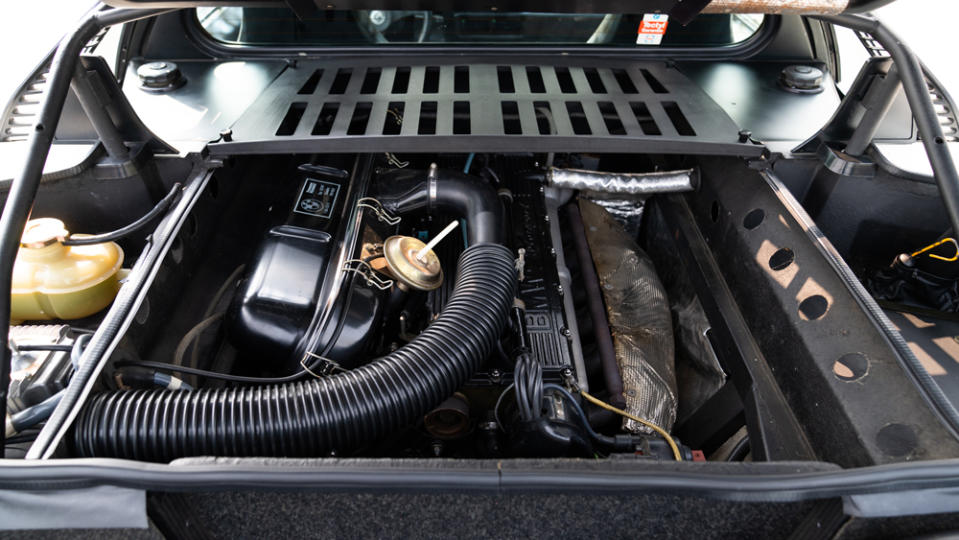
One of 399 road-going examples (the remainder of the production run were built for motorsport competition), chassis No. 442 features its original white paint and black interior. Imported into the United States in 1981 and acquired by the consignor in 2001, it remains in highly original, unrestored condition. This M1 has had no paintwork subsequent to its manufacture, and shows only 11,457 miles on the odometer.
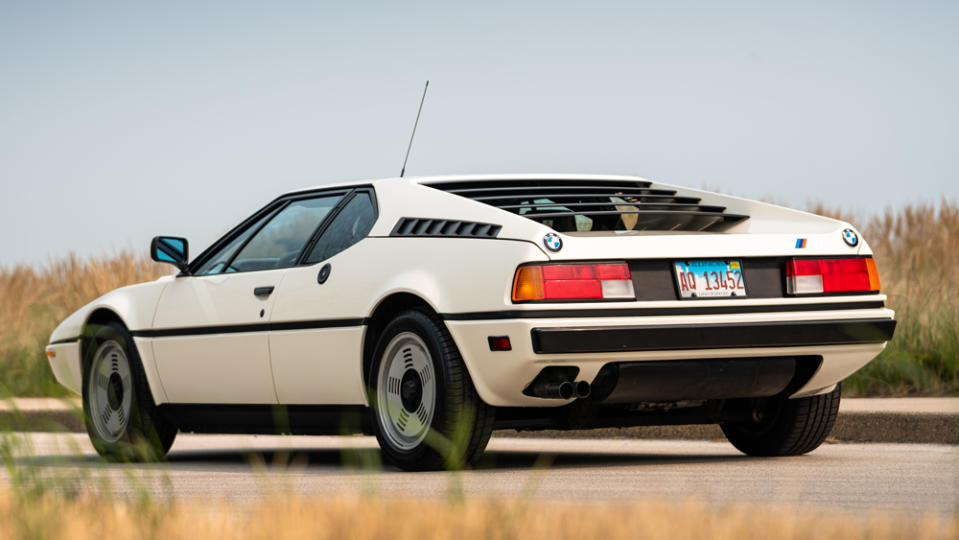
Factory-delivered accessories include a tool roll, a spare tire, a jack, emergency roadside equipment, and a first aid kit. Hindsight notwithstanding, the Gooding & Company estimate of $500,000 to $600,000 might seem absurdly low when viewed a few years from now in the rearview mirror of collector-car history.
Click here for more photos of the 1980 BMW M1 on offer through Gooding & Company.
Best of Robb Report
Sign up for Robb Report's Newsletter. For the latest news, follow us on Facebook, Twitter, and Instagram.



